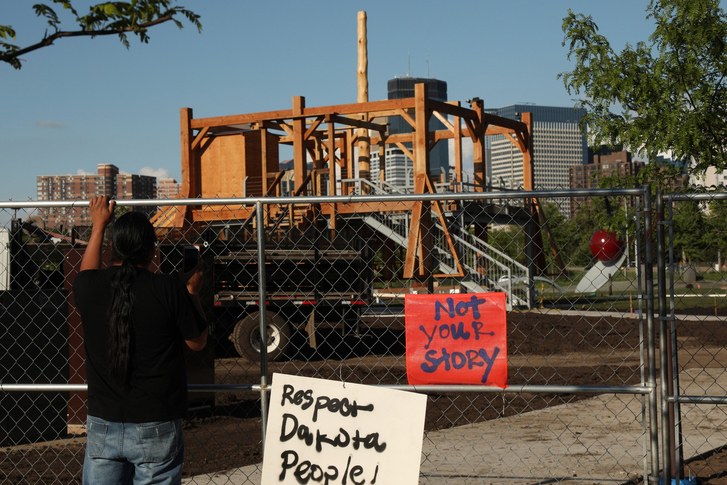CAA News Today
A Call for Dialogue and Discussion | Embracing and Supporting Diverse Voices: Writing About and Making Art in the 2010s
posted by CAA — Nov 17, 2017

In June 2017, Scaffold, a sculpture by the artist Sam Durant, ignited protests among Dakota Sioux activists in Minneapolis where it was being installed at the Walker Art Center. After meeting with tribal elders, Durant and the Walker announced that the piece would be dismantled and burned in a Dakota ceremony. Announced recently, the Walker’s executive director Olga Viso will be stepping down at the end of 2017. Photo: Minneapolis Star Tribune/Zuma Press
As artists, designers, scholars, and other arts professionals, CAA members encompass an enormous range of voices and perspectives. Each of us has found an outlet for our intellectual and creative energies in a passionate commitment to a particular subfield or mode of cultural production.
We would like to open up a conversation about the relation between these two things: our diverse individual and collective positionalities and the subjects and questions we address in scholarly and artistic practices.
We find ourselves at a moment in which the individual and collective stakes of writers, artists, and curators are central to conversations, debates, and judgments about scholarly expertise and responsibility.
We are spurred in part by our observation that for some in the CAA community, these polarizations are having a chilling and possibly stunting effect on the research and creative directions one might choose to engage. The ways this ripples out into the field in the years to come can be imagined, but has yet to be realized in full.
CAA is committed to the open exchange of ideas and to nurturing and supporting scholars and artists in all fields, regardless of their individual ethnic, gendered, sexual, class-based, religious, or regional and national identification. We also acknowledge the deep asymmetries within societies in North America and around the world, and seek to work actively and incisively to challenge the hierarchies that still characterize our disciplines, our scholarly practices, and our lives as artists.
- What active and activist strategies and interventions might we pursue in the current polarized climate?
- Are there limits to what topics scholars and artists should address given their specific positionalities?
- Are there best practices to guide individuals in navigating these difficult waters with grace and attentiveness?
- How can CAA support scholars and artists whose work might come under attack because their positionality differs from the parameters of their subject matter?
We invite your thoughts, input, experiences, and wisdom: we are initiating this conversation so we can think or rethink our practices with the benefit of as much input as possible.


